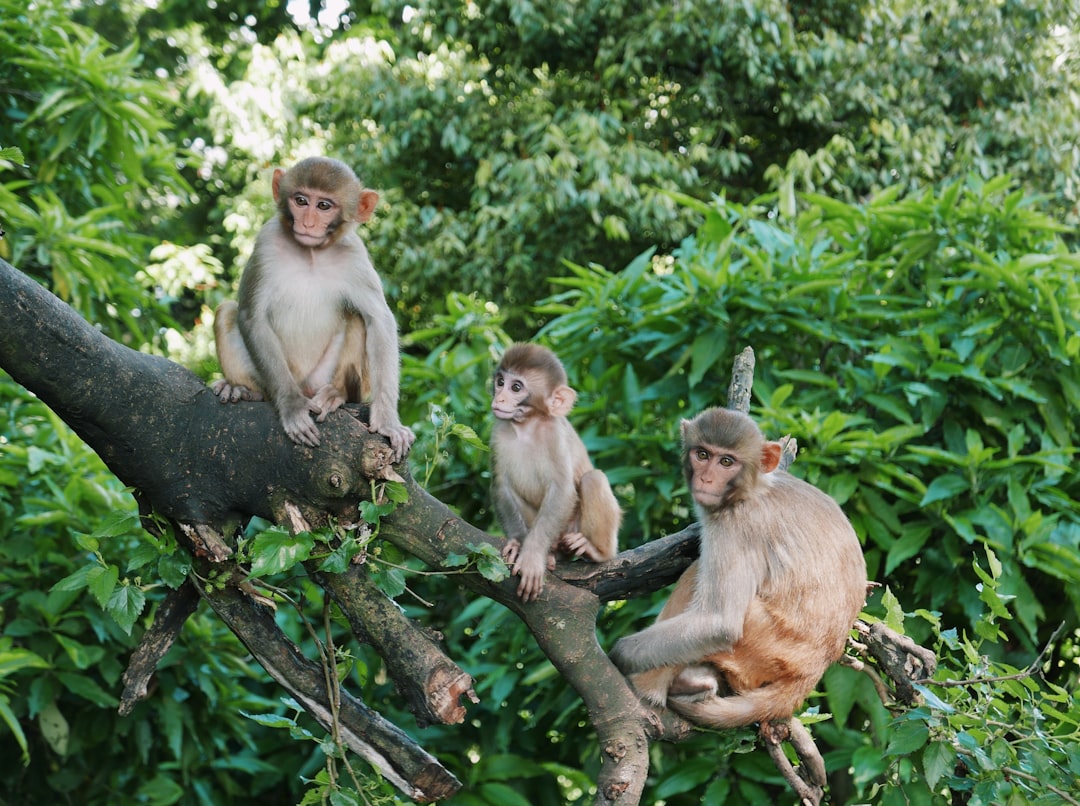What to Expect: More Than Just Monkeys
As you step into the forest, the temperature drops, and the sounds of Ubud's streets are replaced by the chatter of monkeys and the rustling of leaves. Spanning nearly 31 acres, the dense canopy creates a cool, shaded environment that feels like stepping into another world. The atmosphere is straight out of 'The Jungle Book,' with gnarled roots hanging over moss-covered statues and cheeky monkeys leaping between ancient temple walls.
The forest itself is considered sacred. You'll find over 100 species of trees, many of which are holy in Balinese culture. It's common to see offerings placed at their bases, a reminder that the entire area, not just the temples, is a place of deep spiritual significance.
The Three Sacred Temples
Within the sanctuary, there are three Hindu temples dating back to the 14th century. While visitors cannot enter the inner courtyards—which are reserved for the local prayer community—their magnificent architecture and jungle setting add to the mystical ambiance. The main temple is Pura Dalem Agung Padangtegal (The Great Temple of Death), alongside a Holy Spring Temple and a Cremation Temple.
Meet the Locals: The Balinese Long-Tailed Monkeys
The main residents are, of course, the monkeys. They are divided into several groups and roam freely without cages or barriers. While they are accustomed to people, it's crucial to remember they are wild animals. They are intelligent, curious, and notoriously cheeky.
Sanctuary staff feed the monkeys a healthy diet of sweet potatoes, bananas, and coconuts three times a day. To protect the monkeys' health and prevent them from becoming aggressive, tourists are no longer allowed to feed them. They can smell food from a distance, so it's best to leave all snacks behind.
The Golden Rules: How to Have a Safe & Respectful Visit
Interacting with the monkeys can be the highlight of your visit, but a few simple rules will ensure a positive experience for both you and the animals.
Remain Calm: If a monkey jumps on you, don't panic or run. It's likely just curious. Stand still, and it will usually jump off. Slowly walking away also works.
Avoid Eye Contact & Showing Teeth: In the primate world, direct eye contact and baring teeth (even in a smile) can be seen as signs of aggression. Look away and keep a neutral expression.
Secure Your Belongings: Monkeys are attracted to shiny and crinkly things. Keep your sunglasses, phone, and camera secure. Zip up your bags and avoid carrying plastic or paper bags, as they might try to grab them.
No Food or Drinks: Do not bring any food into the sanctuary. Monkeys have a keen sense of smell and may become aggressive trying to get it from you.
Keep Your Distance: Never touch or try to pet the monkeys, especially the babies. Mother monkeys are very protective and will bite if they feel their young are threatened.
Supervise Children: Keep a close eye on your children and make sure they understand and follow the rules.
Visitor Information: The Essentials
Opening Hours: Daily from 8:30 AM to 6:00 PM (last ticket purchase at 5:30 PM).
Entrance Fee: IDR 80,000 for adults (~$5 USD) and IDR 60,000 for children.
Best Time to Visit: Early mornings are peaceful and less crowded. For photographers, the golden hour around 5:00 PM offers stunning light filtering through the trees.
Time Needed: Plan for about 1.5 to 2 hours to explore the forest at a relaxed pace.
Getting There: A Nomad-Friendly Guide
The Monkey Forest is conveniently located at the southern end of Jalan Monkey Forest in the center of Ubud.
On Foot: If you're staying in central Ubud, it’s an easy 15-20 minute walk.
Motorbike: The most common way nomads get around. Parking is available near the entrance for a small fee.
Free Shuttle: A free shuttle bus runs every 15 minutes from the Ubud center (in front of the Puri Lukisan Museum).
Taxi/Ride-Hailing: Grab and Gojek are readily available in the area. If you're coming from further away like Canggu or Seminyak, hiring a driver for the day can be a cost-effective option.































